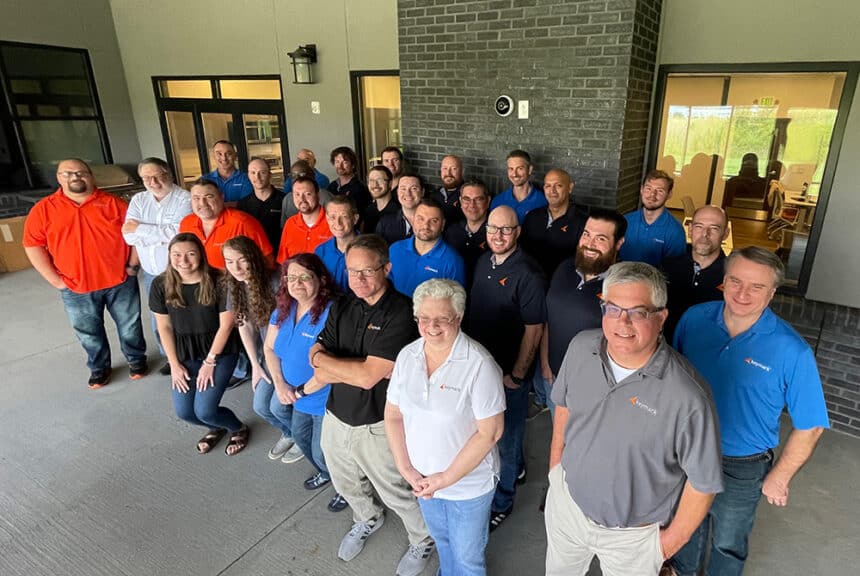OnBase is like a beautiful sports car – it’s fast, powerful and capable of taking you from point A to point B comfortably, securely and quickly. But even the finest sports car needs routine maintenance from time to time, and OnBase is no different.
Without upgrading OnBase to the latest version, it can become unstable over time, and simple problems can escalate into unwanted system failures and downtime. New versions of OnBase also include important security features and updates for known security risks and issues.
The good news is that we deliver Diamond-level OnBase support to our customers, and we’ve identified six important considerations to keep in mind before you upgrade to the latest and greatest version of OnBase.
1. Evaluate Your Existing System
Before you upgrade to a newer version of OnBase, it’s important to take stock of your existing system. Ask yourself a few key questions. Which modules and components are in use? Is there any custom code or any scripts in use? What other software is OnBase integrated with? Which Operating Systems are in use and will they be upgraded? Which browsers are being used by system users and will they be upgraded? Is OnBase integrated with other systems? These types of questions will help you identify potential issues before they arise.
2. Choose the Method That’s Right for You
There are two different methods of upgrading OnBase, and it’s wise to think through the method that’s best for your organization based on your unique situation.
2a. Traditional or Big Bang Method
The first method is the Traditional or Big Bang method, which means you upgrade all components and clients at once.
2b. Parallel Method
The second method is a Parallel upgrade, where you upgrade only a few components of your system at a time. A Parallel upgrade is typically recommended for more complex systems, as it reduces risk and helps ensure business continuity throughout the process. With this approach, you’ll need to follow a series of sequential steps. After each step, confirm functionality and overall stability of the system before continuing with the next step.
Upgrade Database:
- Leave all other processes and server intact
Upgrade Backend Services and Timer:
- Update non-interactive processes (DIP, COLD, Batch OCR, Schedules and Timers)
Install Web/App Server onto New Environments
- Allows you to systematically move processes and users to new version as needed.
Upgrade Client Workstations
- Roll out client workstation updates based on department or functionality
Clean Up
- Perform database cleanup
Set Minimum Client Versions
- Verify all systems are functioning
3. Organize Your Team
Your team plays an integral role in the overall success of the system upgrade. For that reason, you’ll want to involve key stakeholders and decision-makers every step of the way. Often, your team will include infrastructure staff, software support and implementation personnel, management and, last but definitely not least, users. Securing buy-in from users and management early and often is critical to any successful system upgrade!
4. Run the System Assessment Tool
Before you perform the upgrade, you’ll need to confirm that the servers and PCs where the new version of OnBase will be installed can support the new version. The KeyMark Support team has a great System Assessment Tool that will help ensure your hardware is up to the job.
5. Upgrade the Test System First
That old adage that practice makes perfect is true for OnBase upgrades as well. Be sure to upgrade the test system first – before you consider an upgrade to your production environment – and be sure that your test system approximates production as closely as possible.
Once your test system is upgraded, you will need to ensure that users extensively test ALL of their usual OnBase activities to ensure the new version works exactly as expected to support business processes and integrations. It’s much easier to uncover and resolve issues in testing than in production – and less stressful too.
6. Schedule and Implement Production Upgrade
Once testing has been completed on the test environment, it’s time to schedule and implement the production upgrade. If you have followed all steps carefully and tested all processes thoroughly, you can rest easy knowing that your production environment will soon offer the same – only new and improved – OnBase experience to your users and administrators.
What best practices have you discovered for upgrades? We’d all love to hear them!
Take the Next Step
We can help you decide pretty quickly whether this would be a good fit for your organization. With 20+ years of experience in automation, we just need about 5 minutes of Q&A.



